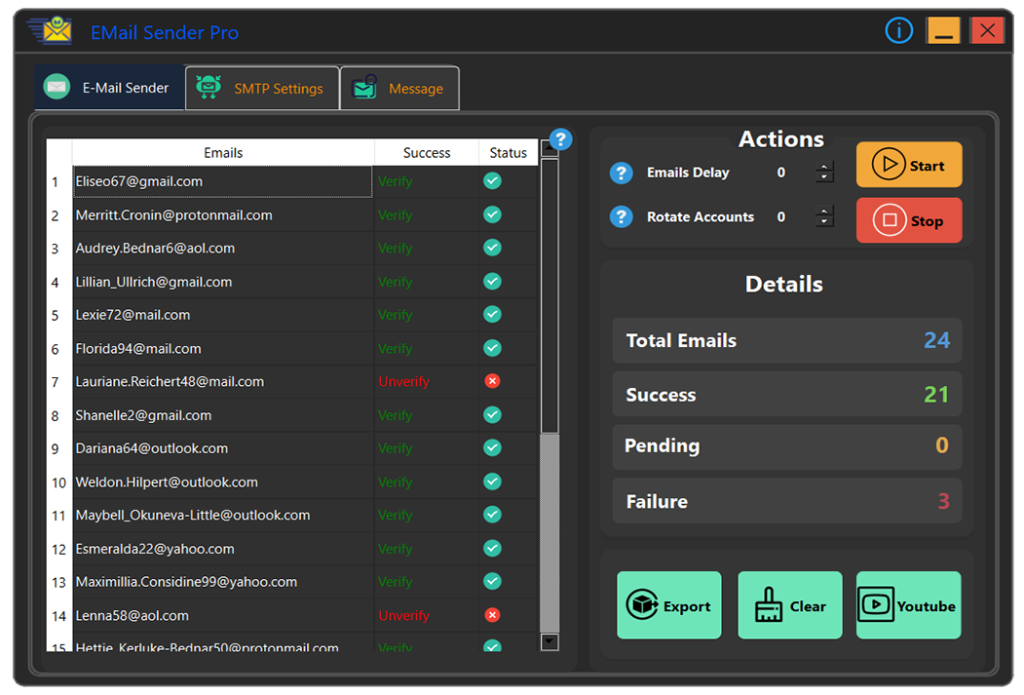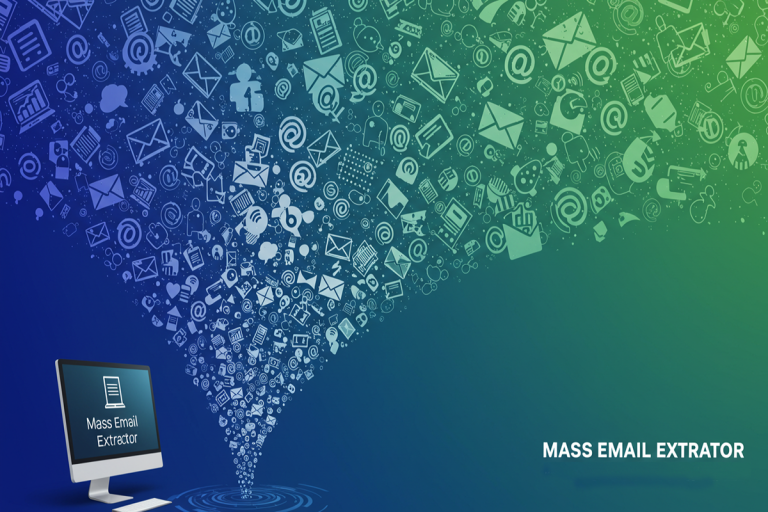Don't miss our new offer - up to 60% OFF!
Choosing the Right Mass Email App for Effective Outreach

In the ever-evolving landscape of digital marketing, email remains one of the most powerful tools for communication, promotion, and lead generation. Whether you’re a small business owner, marketer, or entrepreneur, using a mass email app can significantly streamline your outreach and improve engagement rates.
A mass email app helps you send hundreds or thousands of emails at once, manage your mailing lists, personalize content, and track performance—all in one place. If you’re not using a mass email app yet, you’re missing out on an opportunity to connect with your audience more efficiently.
What Is a Mass Email App?
A mass email app is a software solution designed to send bulk messages to a large number of recipients at once. Unlike traditional email platforms, these apps are optimized for sending at scale, ensuring high deliverability, personalization, and automation.
Many mass email apps come with built-in features such as scheduling, segmentation, analytics, and integration with CRM systems. Some even support cloud-based solutions like SES send bulk email for added flexibility and scalability.

Email Sender Pro
Why You Need a Mass Email App
Using a mass email app offers several advantages:
- Efficiency: Send thousands of emails in a single click
- Personalization: Tailor content for different audience segments
- Analytics: Monitor open rates, click-throughs, and conversions
- Deliverability: Increase your chances of landing in inboxes, not spam folders
- Scalability: Grow your campaigns without technical headaches
When combined with bulk email best practices for senders, a mass email app can elevate your marketing strategy and boost ROI significantly.
Bulk Email Best Practices for Senders
To get the most out of your mass email app, it’s essential to follow bulk email best practices for senders. These include:
- Always use permission-based lists: Sending unsolicited emails can damage your sender reputation.
- Segment your audience: Send relevant content to each group.
- Write compelling subject lines: Increase open rates with curiosity-driven headlines.
- Test before sending: Use A/B testing to identify the best-performing content.
- Optimize for mobile: Ensure your emails look great on all devices.
- Include clear CTAs: Guide recipients toward the next step.
- Provide unsubscribe options: Stay compliant and respectful.
- Monitor performance: Use analytics from your mass email app to refine campaigns.
When done correctly, combining your mass email app with these best practices ensures higher engagement and less risk of being flagged as spam.

Email Sender Pro
10 Examples of Email Sender Software
There are numerous options available in the market, but here are 10 examples of email sender software worth exploring:
- Mailchimp – User-friendly interface and strong automation features
- Sendinblue – SMS and email in one platform
- MailerLite – Great for beginners and small businesses
- GetResponse – Webinar tools integrated with email marketing
- ActiveCampaign – Advanced automation and CRM features
- ConvertKit – Popular among content creators and bloggers
- Amazon SES – Perfect for developers needing SES send bulk email capability
- AWeber – Strong support and pre-designed templates
- Moosend – Budget-friendly, great segmentation features
- SendGrid – Developer-focused, reliable API integrations
Each of these tools can serve as your go-to mass email app, depending on your needs and technical skill level.
SES Send Bulk Email: Amazon’s Powerful Solution
If you’re looking for a reliable, scalable infrastructure, SES send bulk email is worth considering. Amazon Simple Email Service (SES) is a cloud-based platform that lets developers and businesses send marketing, notification, and transactional emails.
Here’s why you might want to integrate SES send bulk email functionality into your system:
- High deliverability: Amazon’s trusted infrastructure improves inbox placement
- Low cost: Pay-as-you-go pricing makes it affordable for large volumes
- Scalable: Send millions of emails effortlessly
- Secure: Built-in compliance and encryption features
While SES might not offer the drag-and-drop features of a traditional mass email app, it’s perfect for those who want control and power under the hood.
Should You Buy Email Sender Tools?
If you’re serious about email marketing, you might be tempted to buy email sender software instead of using free tools. But is it worth it?
Free plans can be great for getting started, but as your contact list grows, so do your needs. When you buy email sender software, you’re investing in:
- Advanced analytics
- Greater sending limits
- Priority customer support
- Custom branding and templates
- Enhanced automation and integrations
Ultimately, whether you use a free or paid mass email app, the goal is the same: reach more people effectively. Evaluate your goals, budget, and technical requirements before making a decision.

Email Sender Pro
Key Features to Look for in a Mass Email App
When choosing the right mass email app, make sure it includes these essential features:
- List segmentation
- Drag-and-drop email builder
- Spam testing and previewing
- Automation workflows
- A/B testing
- Responsive templates
- Deliverability monitoring
If you’re combining it with tools like SES send bulk email, also look for API access and advanced customization options.
Final Thoughts
Whether you’re new to email marketing or looking to scale your campaigns, a mass email app is a must-have tool. With the right software, clear strategy, and attention to bulk email best practices for senders, you can build strong relationships, generate leads, and grow your brand faster than ever.
From cloud solutions like SES send bulk email, to simple drag-and-drop platforms, the options are endless. Explore 10 examples of email sender software, consider your unique needs, and don’t hesitate to buy email sender software when you’re ready to take things to the next level.
In the end, choosing the right mass email app is about more than just sending emails—it’s about building a long-term communication strategy that delivers real results.



